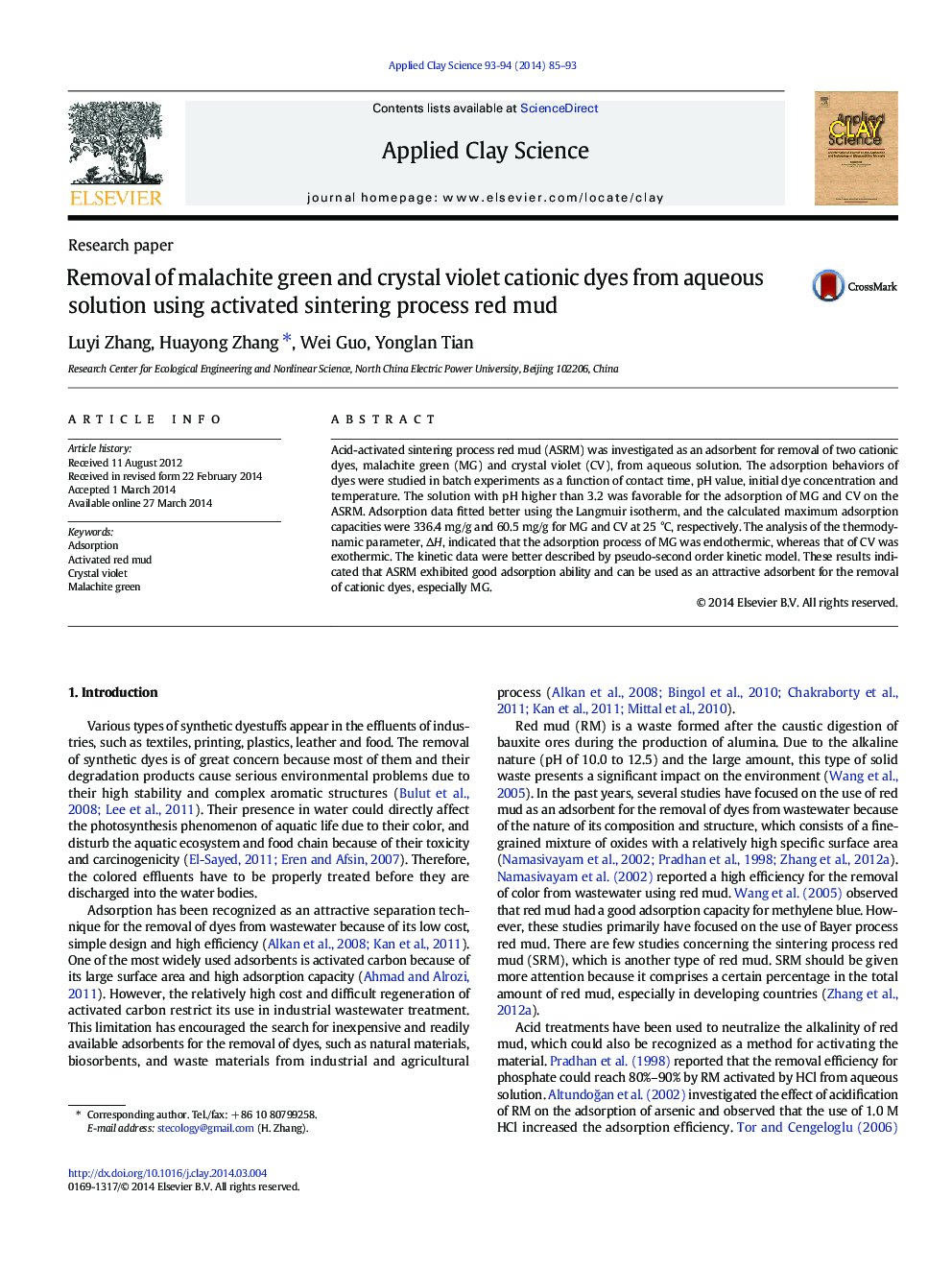| Article ID | Journal | Published Year | Pages | File Type |
|---|---|---|---|---|
| 1694847 | Applied Clay Science | 2014 | 9 Pages |
•ASRM was prepared by acidifying sintering process red mud with 0.5 mol/L HCl.•The surface area significantly increased from 33 m2/g to 130 m2/g.•The cationic dye adsorption characters were investigated through batch experiments.•The adsorption of MG onto ASRM was observed higher than that of CV.
Acid-activated sintering process red mud (ASRM) was investigated as an adsorbent for removal of two cationic dyes, malachite green (MG) and crystal violet (CV), from aqueous solution. The adsorption behaviors of dyes were studied in batch experiments as a function of contact time, pH value, initial dye concentration and temperature. The solution with pH higher than 3.2 was favorable for the adsorption of MG and CV on the ASRM. Adsorption data fitted better using the Langmuir isotherm, and the calculated maximum adsorption capacities were 336.4 mg/g and 60.5 mg/g for MG and CV at 25 °C, respectively. The analysis of the thermodynamic parameter, ΔH, indicated that the adsorption process of MG was endothermic, whereas that of CV was exothermic. The kinetic data were better described by pseudo-second order kinetic model. These results indicated that ASRM exhibited good adsorption ability and can be used as an attractive adsorbent for the removal of cationic dyes, especially MG.
